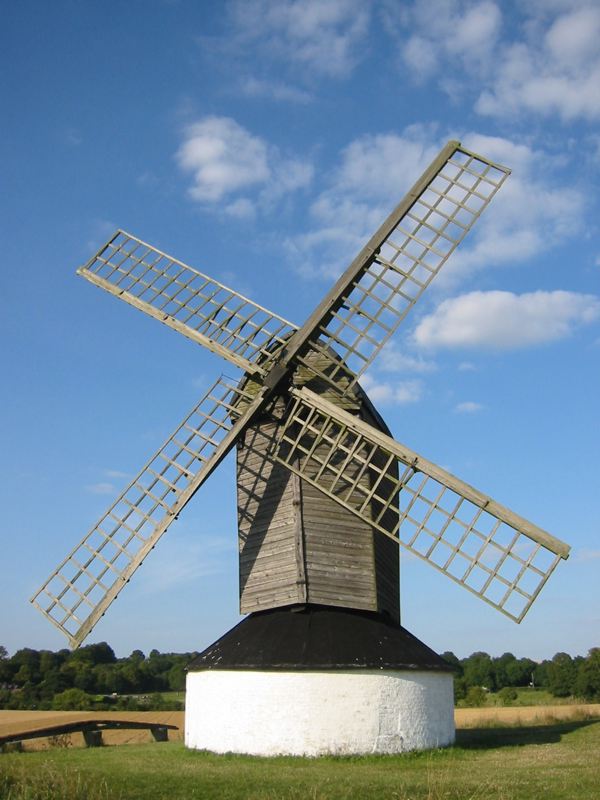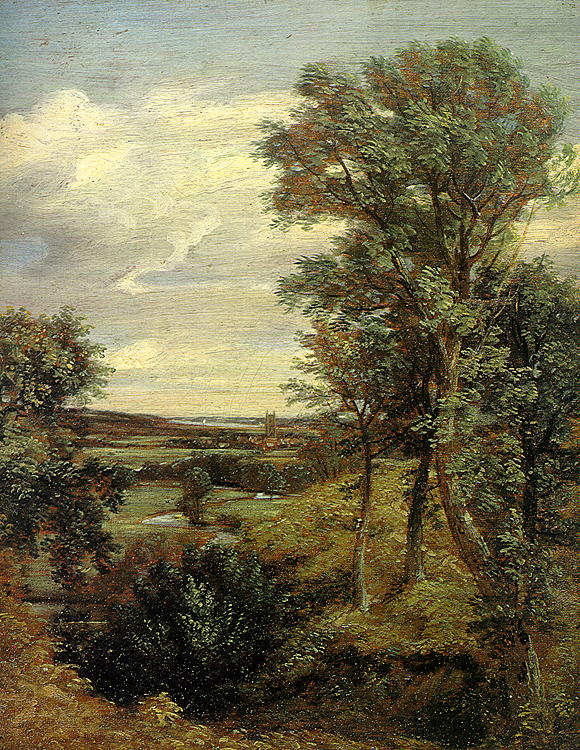Henry Edgar was Johnson and Sarah's second boy and third
child. He was born in about 1826 - the
1841 Census, which finds him still living at home, lists Henry as 15. On June
21, 1849 he married Sarah Kensey (or Kinsey) of Felsham. Felsham's about 5
miles to the north of Preston, and my guess is he met her because he'd become
the tenant of a mill there, although I can't be sure of the order of events
because I don't know when he took over the tenancy. Sarah was born in Felsham in
the period 1821-3 - her age seems to fluctuate in the different census returns!
As I explained in my post on Johnson's economic activities,
the family were windmill owners as well as tenant farmers. Henry's elder
brother ran Johnson's mil in Preston St Mary, before moving to one in
Bury St Edmunds- I'll trace his career and problems as a parent in my next post. At
some point in the 1840s Henry decided to follow the same path. I think this
must have been before March 1849:
Robert Lee, aged 16,
stealing 2 sovereigns, the property of Mr. Edgar, of Felsham, 14 days'
imprisonment and to be whipped.[2]
FELSHAM SUFFOLK
TO BE LET
A POST WINDMILL
WITH two Patent and
two Common Sails, two pair of French Stones, Flour-Mill Jumper, and Going-gears
complete. A very commodious Round-house, together with a convenient
DWELLING-HOUSE, stable, Cart-shed, &, now in the occupation of Mr. EDGAR,
whose tenancy expires on the 11 October next.
The above Property is
situated within 8 miles of Bury, and 6 of Stowmarket.
For further
particulars, enquire of Mrs. Barnes, Boxhall.
The first point to
note is that as his tenancy was expiring in October 1850 he must have
been there at least a year before that, possibly up to five. That windmill is
first mentioned in 1824 and in 1867 it was demolished and the milling moved to
Gedding.[3] A
little research online helps clarify the nature of the building and its
operation:
The post
mill is the earliest type of European windmill. The defining feature
is that the whole body of the mill that houses the machinery is mounted on a
single vertical post, around which it can be turned to bring the sails into the
wind. [4]

Post Mill (not Henry's)
"Pitstone-windmill.600px". Licensed under CC BY-SA 3.0 via Commons - https://commons.wikimedia.org/wiki/File:Pitstone-windmill.600px.jpg#/media/File:Pitstone-windmill.600px.jpg
That issue of moving the sails so they can take advantage of
the changing winds is one of the most important aspects of milling. 'Common
sails' were the first type of sail and go back to the middle ages. There were
different kinds, but what characterised them all was that the mill had to be
stopped to adjust them. 'Patent sails' were a relatively recent invention
(1813) and could be adjusted without stopping the mill. 'French stones' are
used for milling wheat. A 'jumper' enabled three or four different grades of
flour to be produced. 'Roundhouses' were built around the supporting trestles
to give them protection and also provide storage space. I don't know what 'Going-gears'
are, but they're mentioned in almost all the historical windmill adverts I've
found online, so they were obviously standard equipment. There's an excellent
website on the history of Felsham which provides a photomontage that enables us
to get a sense of the windmill Henry was tenanting and its place in the village
landscape:
http://felshamhistory.blogspot.co.uk/
The author tells us that the mill would have rivalled the
church tower in height and must have dominated this part of the village. Next
to the mill is the Live and Let Live beer-house on Upper Green -
presumably Henry's local, as future developments will. prove he was no teetotaller.
In any case, either the owners failed to find a tenant who'd
pay a higher rent, or Henry himself agreed to stump up more. In the 1851 Census
he's still the Felsham miller living at 5, the Green, and employing one man. Although
he's described as 'head' of the household there was nobody else at home for him
to rule over. Where was Sarah? She was visiting her father William, 67 years
old and a widower. He kept the Bell Inn in Felsham, which might have given her
husband ideas, as we shall see. Sarah's mother had died some time between the
1841 and 1851 Censuses.
When we next find Henry and Sarah they've arrived in what is
generally regarded as 'the heart of Constable country'.

"ConstableSelfPortrait". Licensed under Public Domain via Commons - https://commons.wikimedia.org/wiki/File:ConstableSelfPortrait.png#/media/File:ConstableSelfPortrait.png

Dedham Vale 1802
"Constable DeadhamVale". Licensed under Public Domain via Commons - https://commons.wikimedia.org/wiki/File:Constable_DeadhamVale.jpg#/media/File:Constable_DeadhamVale.jpg
Unfortunately we can't be sure when Henry took the momentous
step of crossing the Stour and becoming a publican in Dedham which is just on
the Essex side of the river.

River Stour running through Dedham Vale
"Cmglee Manningtree River Stour" by Cmglee - Own work. Licensed under CC BY-SA 3.0 via Commons - https://commons.wikimedia.org/wiki/File:Cmglee_Manningtree_River_Stour.jpg#/media/File:Cmglee_Manningtree_River_Stour.jpg
Another family is linked to the Sun Inn between 1851-1855,[5] so
it must have been after that. The first definite reference to Henry as landlord
comes in 1859.[6] The 1861
Census has Henry and Sarah keeping the Sun with the help of John Knock, an
ostler aged 65,[7] and the
financial support of two married lodgers. Adverts in the local papers make it
clear that the landlords of the Sun also supplemented their income by hiring
out 'the Large Room' for auctions.
Trade directories link him to the Inn
in 1862, 1867, 1870, 1871, 1874[8] so
I think we can assume that he stayed at the Sun continuously until his death in
1877. He's also on a list of residents in 1863, and from this we can get an
idea of the competition:
Inns and Taverns
Anchor, Robert Smith
Compasses, John Hicks Symonds
Gun, Samuel Askew
Lamb, Samuel Osbome
Marlborough Head, Mary White
Rose and Crown, Arthur George Saunders
Sun Inn, Henry Edgar[9]
Anchor, Robert Smith
Compasses, John Hicks Symonds
Gun, Samuel Askew
Lamb, Samuel Osbome
Marlborough Head, Mary White
Rose and Crown, Arthur George Saunders
Sun Inn, Henry Edgar[9]
The Sun is a splendid coaching Inn
in Dedham High Street, with its origins in the fifteenth century. The
seventeenth century external staircase was considered a fine feature,[10]
as was the view from the courtyard:
(S)ometimes the local
church-tower comes in, across the roof-tops, in a partly benedictory and wholly
sketchable way, as at the village of Dedham , near Colchester ,
where the yard of the “Sun” inn and the church-tower combine to make a very
fine composition. A relic of the bygone coaching days of Dedham remains, in the
small oval spy-hole cut through the wall on either side of the tap-room
bay-window, and glazed, commanding views up and down the village street, so
that the approach of coaches coming either way might be clearly seen.[11]
You can see that church in the background of another
Constable picture:
http://www.tate.org.uk/art/artworks/constable-dedham-lock-and-mill-n02661
But I doubt that the Edgars moved because of the historical
associations of the Inn or the romance of the
surrounding countryside. We can only guess as to their motives - which might
have been as simple as another attempt to raise rent; but what's certain is
that the life of a miller was uncertain and the labour was heavy. Periods of
enforced idleness (with no earnings) were followed by ones of continuous
labour, everything dependent on the whim of the winds. While no-one would claim
a Victorian landlord had it easy, the life of the proprietor of a
well-established might well have seemed easier and more secure than that of a
miller.
In any case, as the years go by we catch a few glimpses of
Henry and Sarah.
The first of these, in 1868, brings one of those moments
that family historians love: Henry's history links up with that of the broader
story of our country. In 1867 the Tory Prime Minister Benjamin Disraeli,
determined to take what one of his own supporters called 'a leap in the dark'
in order to steal a march on William Gladstone's Whigs (soon to become the
Liberals), gave the vote to most male 'heads' of households in the towns. Henry
Edgar's name appears as one of these 'New Voters' on the 1868 electoral
register.[12]
The next year shows us a scene, that in one form or another,
probably happened a lot. Every year Dedham
held a two-day fair,[13] and
like other such gatherings in the region this seems to have attracted people
keen to get very drunk indeed:
About 2 a.m. on the
morning of April 1, 1869 on the second day of the fair, the landlord of the Sun
Inn called P. C. Murrells because 4 miscreants were drunk and behaving
riotously. They refused to leave. Each was fined 5s. with 9s. 6d. costs, or two
weeks.[14]
In the 1871 Census Henry
and Sarah have one servant and an ostler. Dedham 's
development is typical of nineteenth century Britain . After the construction of
the Great Eastern railway in the 1840s the town, which had no station, became a
'social backwater',[15]
and no doubt the trade in coach passengers went into gradual decline. The Inn gave the Edgars employment for the rest of their
lives, but the evidence of the probate summaries of their wills suggests it was
at best a very modest prosperity they enjoyed.
Henry's died at the Inn on August 15, 1877, aged 53;[16]
he left his wife less than £450.[17] Sarah was obviously a strong-minded woman as
she took over the difficult task of managing a Victorian Inn on her own. Trade
directories link her to the Inn in 1878 and
1882,[18]
and in the 1881 Census she was employing a live-in barmaid. She had one lodger,
who was also her nephew, Jeremiah Pryke (an unemployed engineer), and a
visitor.
Sarah had to cope with the efforts of the Church of England
Temperance Society which was at work in Dedham
in 1882 (and perhaps before), but happily with little effect. In 1895 there
were 10 inns, about one for every 150 inhabitants.[19] I
suspect Sarah's last years were rather sad though. She died on July 22, 1883
leaving a personal estate of £150 5s. 6d. Bertha Jarrold, spinster of Dedham , was the sole executrix.[20]
Bertha was that live-in barmaid in the 1881 Census, and she was then aged 21 - so
Sarah, who had no children, also seems to have had no other family or close
friends of her own age. Bertha didn't take over the Sun though; later that year
one Mr. Page was landlord.[21]
So ended the first Edgar colonisation of Essex .
But, as Sarah was spending her last years hosting the Sun, another move into
the county - this time enforced by economic necessity - was already taking
place.
Note:
For an update on the Sun Inn, see:
https://www.theguardian.com/travel/2022/apr/01/pub-walk-the-sun-inn-dedham-essex-constable
[1] http://edgarfamilyintheworldblog.blogspot.co.uk/2015/08/the-early-history-of-edgars.html
[2] Bury and Norwich
[3] https://en.wikipedia.org/wiki/List_of_windmills_in_Suffolk
[4] https://en.wikipedia.org/wiki/Post_mill
[5] http://pubshistory.com/EssexPubs/Dedham/sun.shtml
[6] http://www.camulos.com/inns/2015part4refs.pdf
[7] There's
a question mark here: the street number (9) is different to later Censuses (40)
and the buildings in the street are also different. There was a 'Gun Inn' in Dedham , but the details
don;t match up either. As the Edgars are linked to the Sun Inn in 1859 and
1862, I've assumed that's where they were in 1861.
[8] http://pubshistory.com/EssexPubs/Dedham/sun.shtml
[9] http://www.historyhouse.co.uk/placeD/essexd08d.html
[10] http://www.archive.org/stream/cu31924015353463/cu31924015353463_djvu.txt
[11] Charles
G. Harper, The Old Inns of Old England
[12] Ancestry.com. UK Provo , UT , USA
[13] http://www.british-history.ac.uk/vch/essex/vol10/pp154-161
[14] Essex Standard, 16 April 1869, 6.
[15] http://www.british-history.ac.uk/vch/essex/vol10/pp154-161#h3-0003
[16] Essex Standard, 31 August, 1877, 5.
[17] Ancestry.com. England & Wales Provo , UT ,
USA
[18] http://pubshistory.com/EssexPubs/Dedham/sun.shtml
[19] http://www.british-history.ac.uk/vch/essex/vol10/pp154-161#h3-0003
[20] Ancestry.com. England & Wales Provo , UT ,
USA
[21] Essex Standard, Suffolk
No comments:
Post a Comment